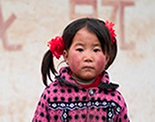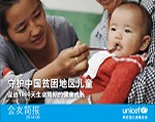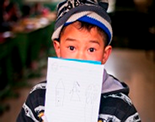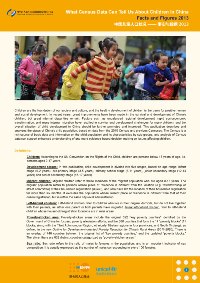Definitions:
Children: According to the UN Convention on the Rights of the Child, children are persons below 18 years of age, i.e. persons aged 0-17 years.
Development stages: In this publication, child development is divided into five stages, based on age range: infant stage (0-2 years), pre-primary stage (3-5 years), primary school stage (6-11 years), junior secondary stage (12-14 years) and senior secondary stage (15-17 years).
Migrant children: Migrant children refer to those members of the migrant population who are aged 0-17 years. The migrant population refers to persons whose place of residence is different from the location (e.g. town/township or street committee) of their household registration (hukou), and who have left the location of their household registration for more than six months. It excludes the population whose current place of residence is different from that of their hukou registration, but is within the same city-level administration.
Left-behind children: Left-behind children refer to children who live in their original domicile, but do not live together with their parents, as either one parent or both parents have migrated. Rural left-behind children refer to left-behind children whose household registration locations are in rural areas.
Poverty-stricken area: Poverty-stricken areas include the original 592 "key poverty counties" identified by the Government of China for focused poverty alleviation efforts, and the 676 counties that form the 14 "poverty blocks" (11 blocks, along with the Tibet Autonomous Region, ethnically Tibetan regions in four provinces, and South Xinjiang), as defined in the new Outline for Development-oriented Poverty Reduction for China's Rural Areas (2011-2020). There is an overlap of 440 counties between the list of "key poverty counties," and the updated "poverty blocks." Therefore, there are 828 distinct counties categorized as "poverty-stricken areas."
Sex ratio: Sex ratiorefers to the ratio of males to females in the population, and is an important indicator of sex composition. It is usually expressed as the number of males corresponding to every 100 females.
Sex ratio at birth: Sex ratio at birth refers to the number of live male births corresponding to every 100 live female births. In the absence of intervention, sex ratio at birth lies between 103 and 107.
Failure to receive or complete compulsory education: According to the Compulsory Education Law of the People's Republic of China promulgated in 1986, children of school age are subject to nine years of compulsory education. In this publication, children who fail to receive or complete compulsory education include those who have never been to school, those who have graduated from primary school only, and those who have dropped out of primary school or junior secondary school.
Download File:
EN-Children&Census facts and figures 2013





























